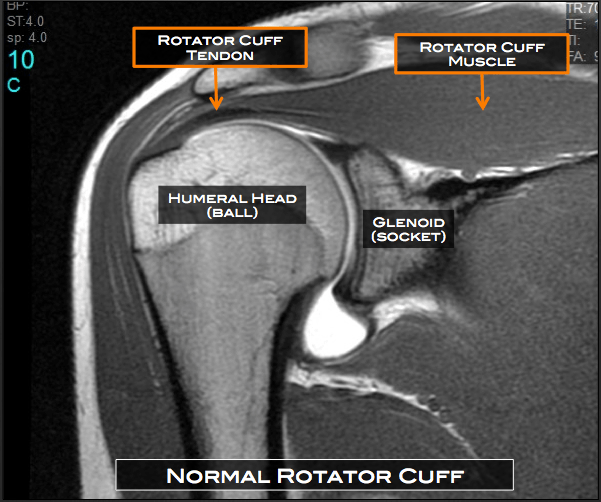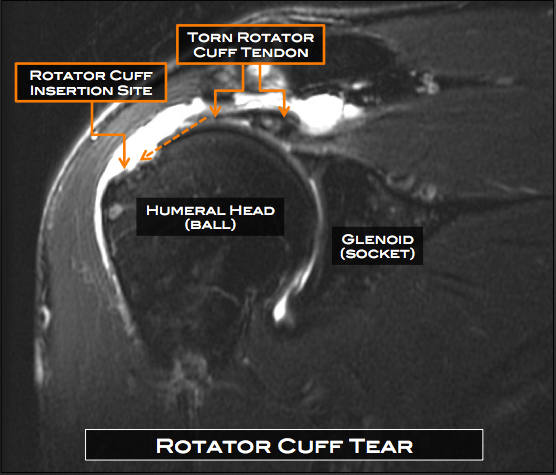Rotator Cuff Repair

As seen on this MRI of a normal shoulder, the rotator cuff muscle transitions into tendon (black portion) as it runs toward its insertion on the humeral head.

In this example of a "full thickness" rotator cuff tear, the supraspinatus tendon is torn and pulled away from the normal rotator cuff insertion site. In order to repair the tendon, it must be secured back to its insertion site on the humerus, as shown by the course of the dotted orange arrow.
Rotator cuff repair involves securing the edge of the torn rotator cuff tendon back to bone. The repair can be performed either arthroscopically or through an open incision. Dr. Driscoll has extensive training in arthroscopic rotator cuff repair and believes that this approach allows for the best possible repair while minimizing post-operative pain
Arthroscopic rotator cuff repair is performed through small incisions around the shoulder called “portals”. An arthroscopic camera is passed through one portal and small surgical tools are passed through other portals to perform the repair. The tendon is repaired with high-strength sutures attached to one or more small suture anchors placed in the bone. Dr. Driscoll also employs a variety of techniques aimed at improving the body's ability to heal at the repair site.
Arthroscopic rotator cuff repair is an outpatient surgery. Patients go home the same day with a shoulder immobilizer sling. The sling is worn for 4-6 weeks, but may be removed for bathing and work on a computer. Most patients are allowed to return to their activities by 6 months after surgery, but full recovery may take up to 1 year.
